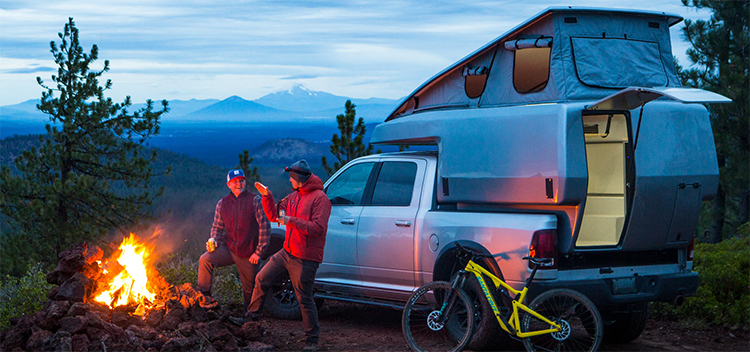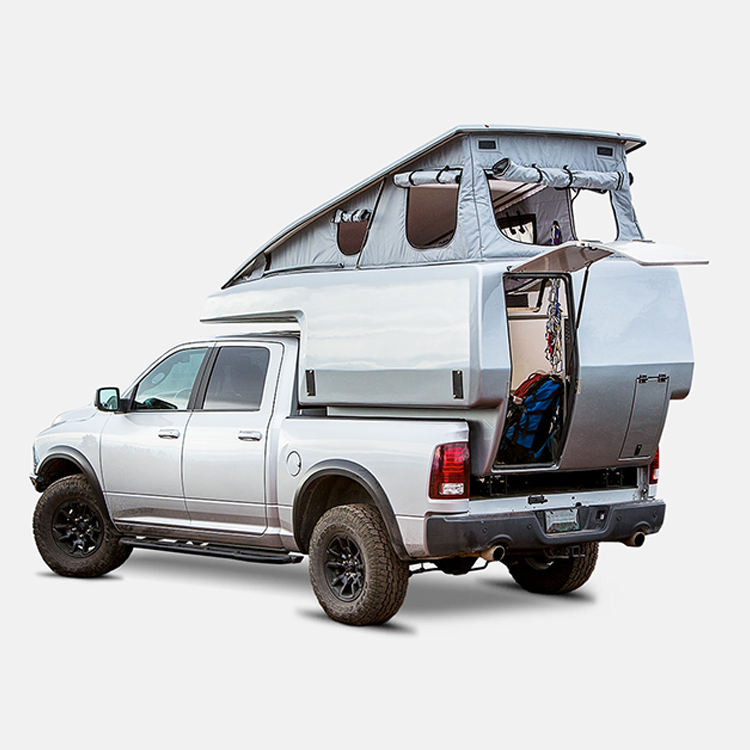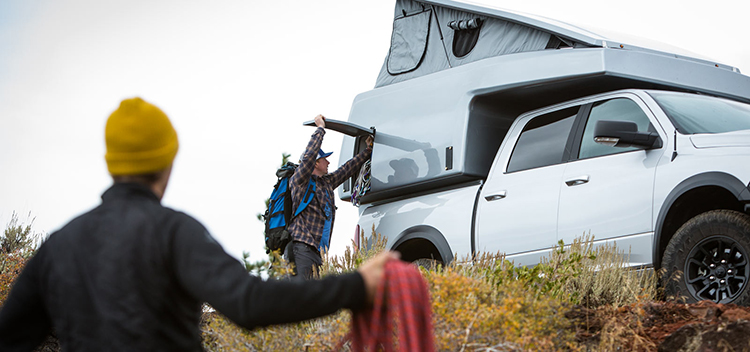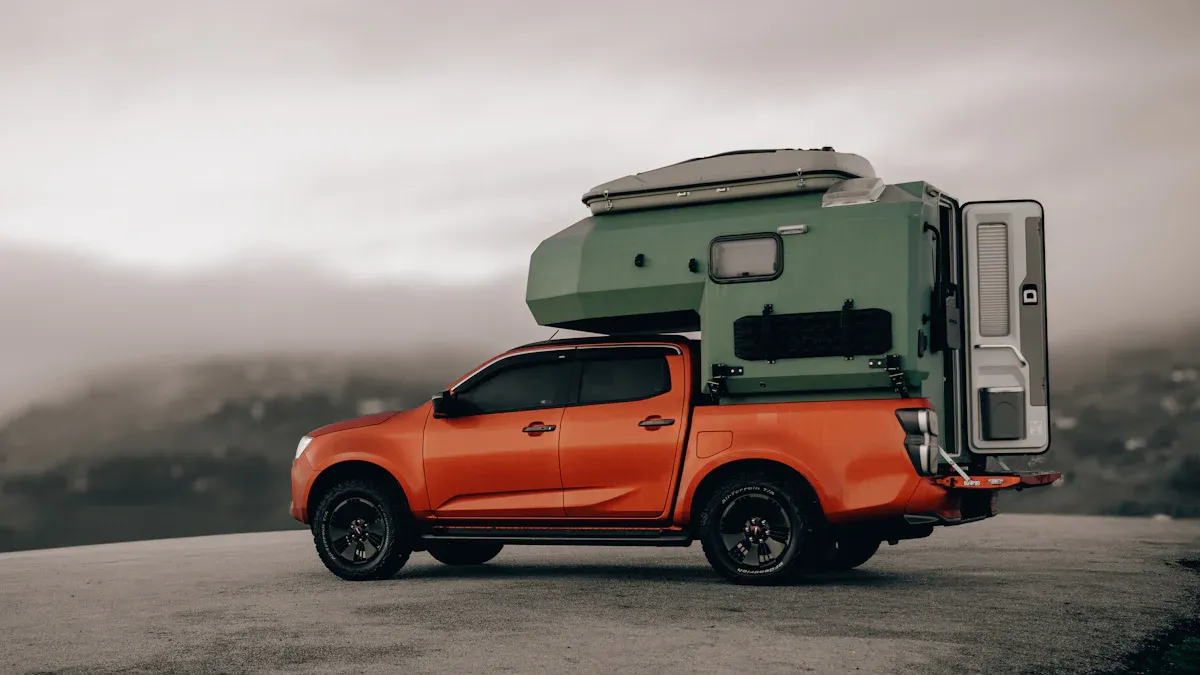Customizing Your Camper Truck for Off-Grid Adventures in 2025

Picture waking up to birds singing, surrounded by peaceful nature. There’s no loud neighbors or busy city noise.
That’s the joy of living off the grid in a camper truck. In 2025, more people are choosing this lifestyle for its freedom. Customizing your camper truck lets you create a space just for you. It’s perfect for chasing sunsets or exploring hidden trails.
Building your own camper truck isn’t just about saving money. It’s about making a home that shows who you are. The camper truck market is growing fast because people love outdoor adventures.
They want small, flexible options, and DIY builds offer that. You can choose great materials, add solar panels, and install water filters. It’s all about being independent and making off-grid life simple.
With today’s tools and technology, camper living is easier than ever. Portable power stations and smart storage make it even better. The choices are endless. So, why wait? Start your off-grid adventure now.

Changing your camper truck lets you make it special and fit your style. It also improves your off-grid trips.
Planning your budget is very important. Think about costs to avoid spending too much and get the right tools and materials.
Solar power is very helpful for off-grid life. It gives clean energy and keeps your camper batteries full.
Good waste and water systems are needed for off-grid living. Plan these to stay comfortable and eco-friendly.
Adding good insulation and heating or cooling makes your camper cozy. This helps you enjoy trips in any weather.
Planning Your Camper Truck Build
Budgeting for Off-Grid Living
When I planned my camper truck, budgeting was super important. Living off-grid can save money, but you need a plan. I split my costs into groups like tools, materials, and systems. For example, Baltic birch plywood costs more but lasts longer. It’s also lightweight, which is great for builds. My total cost was about $30,000, much cheaper than buying an RV.
I used a timeline with small goals to stay organized. SketchUp helped me design the layout and avoid mistakes. Monthly costs can be between $1,000 and $3,000, depending on your choices. Off-grid living is flexible, so you can change your spending anytime.
Tools and Materials for DIY Customization
You need the right tools to build a camper truck. I used a cordless drill, impact driver, and circular saw. For detailed work, clamps and a pocket-hole jig were super helpful. If you want advanced designs, laser-cut aluminum parts look professional. Onshape’s design tools also helped me make custom features.
Good materials are just as important. I picked Baltic birch plywood for cabinets because it’s strong and light. I used strong adhesive to keep things in place. These choices made my camper both useful and nice-looking. Trust me, good tools and materials make everything easier and better.
Choosing the Right Truck for Your Needs
Choosing the right truck is really exciting. I wanted a truck that’s reliable and good for off-road trips. Trucks with features like a 3-inch lift and rear coil conversion are great for rough roads. I also wanted good fuel efficiency, so I looked for upgraded engines. Some trucks even come with extras like rooftop tents or awnings for convenience.
If you plan to tow, check the truck’s towing power. Look for trucks with electronics like a Redarc inverter for managing power. The right truck lets you explore faraway places while staying comfortable off the grid.
Essential Systems for Living Off the Grid
Solar Power and Backup Energy
When I started off-grid living, solar power was super helpful. It’s clean, quiet, and works well. I added solar panels to my camper truck. They keep my extra batteries charged even when the engine is off. The panels give enough energy for lights, a fridge, and a small fan. A good solar setup can handle most power needs. This makes off-grid living much easier.
I also got a solar generator for emergencies. It’s small and easy to carry. For example, truck liftgates need a lot of power, around 300 peak amps. Solar panels help keep batteries charged, so I never run out of power. If you’re going off-grid, use solar power with an inverter. An inverter changes DC power to AC. This lets you use things like a coffee maker or laptop.
Here’s a simple table of power options I looked at:
Power Source | Description | Efficiency Considerations |
|---|---|---|
Vehicle Battery (12V) | Runs basic things like lights and pumps. | Can drain fully, leaving you stuck. |
Auxiliary Battery | Deep-cycle batteries last longer and work well. | Charged by solar panels or alternators. |
Renewable Power | Solar panels use sunlight to charge batteries. | Great for the environment and works best when parked. |
Shore Power | Connects to campsite power sources. | Needs the right plugs and gear. |
Inverter | Changes DC power to AC for appliances. | Useful for many devices. |
Generators | Reliable but loud and not often used in vans. | Needs fuel and upkeep. |
Propane | Good for cooking and heating. | Needs refilling often. |
Water Storage and Filtration
Water is key for off-grid living. My camper truck has enough water storage for cooking, cleaning, and drinking. For long trips, I upgraded to a bigger tank. It holds enough water for several days. I also bring foldable water containers for extra storage. They are light and easy to carry.
To make sure water is safe, I added a filter system. It lets me refill from rivers or lakes. This is great for remote camping spots. I also keep jerry cans for emergencies. If you’re going off-grid, think about how much water you’ll need. Plan based on how many people and how long your trip is.
Here are some tips I’ve learned:
Bring extra water for places with no supply.
Add a filter to make natural water safe to drink.
Waste Management Solutions
Handling waste is important for off-grid life. I chose a composting toilet for my camper. It’s eco-friendly and doesn’t need water or chemicals. It’s also easy to take care of. For sink and shower water, I use a portable tank. It’s simple to empty at dump stations.
If you’re building an off-grid camper, pick a bathroom setup that works for you. Composting toilets are great for the environment. You can also try cassette or portable toilets. Whatever you pick, make sure it’s easy to clean and doesn’t take up too much space.
Living off the grid means managing your waste. It’s not fun, but it’s worth it for the freedom and adventure of off-grid life.
Heating and Cooling Systems
When I started living off the grid, I quickly realized how important heating and cooling systems are. Staying comfortable in extreme weather makes all the difference. Whether you're camping in the desert or the mountains, having the right setup keeps your off-grid RV cozy and functional.
For heating, I chose a diesel heater. It’s efficient and doesn’t use much fuel. Plus, it works even in freezing temperatures. I also added insulation to my camper truck to keep the heat inside. This reduced the energy needed to stay warm. On the cooling side, I installed a 12V fan and a small portable AC unit. These are perfect for hot summer days. Solar power runs both, so I don’t worry about draining my batteries.
Here’s a quick look at energy consumption for heating and cooling systems:
Condition | Energy Consumption (kWh) | Reduction (%) |
|---|---|---|
Baseline Heating | 60 | N/A |
Advanced Heating | 45 | 25% |
Eastern Cooling | N/A | 35% - 40% |
Western Cooling | N/A | 50% - 55% |
Idle Load Reduction | Heating: 7 - 14 | N/A |
Daily Thermal Demand | 10 | 35.6% - 68.7% (Cooling) 6.1% - 34.3% (Heating) |
I also keep a solar generator as a backup. It powers my heating and cooling systems when the weather isn’t great for solar panels. This setup ensures I stay comfortable no matter where I park my off-grid RV.
If you’re planning your camper truck, think about your climate. A good heating and cooling system makes living off the grid much easier. Trust me, it’s worth the investment.
Interior Customization for Comfort and Functionality

Space-Saving Layouts
When I planned my camper truck, using space wisely was key. There’s not much room, so I made every inch useful. I picked furniture that could do more than one thing. For example, my sofa turns into a bed at night. Foldable tables and chairs also saved space when not needed.
I used light colors and natural light to make it feel bigger. At night, dimmable lights created a warm and cozy feeling. Here’s a simple table of what worked for me:
Strategy | Description |
|---|---|
Multipurpose Furniture | Foldable tables and chairs that save space when stored. |
Built-in Storage | Cabinets and shelves to use vertical space for storing items. |
Better Lighting | Bright colors and natural light to make the space feel larger. |
These ideas made my camper feel like home while staying practical.
Clever Storage Ideas
Good storage is super important in a camper truck. I learned this after losing tools on a trip. To fix it, I added cabinets with sections for everything. Shelves that go up helped save space too. I even used the area under my bed for extra storage.
Collapsible containers were a big help. They fold flat when empty and hold clothes or kitchen stuff. I also used hooks and magnetic strips to keep things tidy. For example, a magnetic strip held my knives safely in the kitchen. These tricks kept my camper neat, even on long trips.
Insulation and Cozy Features
Insulation makes off-grid living much better. It keeps your camper warm in winter and cool in summer. I used spray foam insulation because it works really well. It stopped heat from coming in during summer and kept warmth inside during winter.
I also added soundproof insulation to block outside noise. This was great when parked in noisy places. For extra comfort, I hung thermal curtains and put down a soft rug. These small changes made my camper feel warm and inviting.
Here’s why insulation is important:
It keeps temperatures steady all year.
It stops moisture, so no mold or mildew grows.
It blocks noise, making it peaceful inside.
If you’re building a camper, don’t skip insulation. It’s worth it for the comfort it adds.
Exterior Modifications for Off-Grid Adventures

Off-Road Upgrades
When I worked on my camper truck, off-road upgrades were a must. I wanted to travel on rough trails without worrying about damage. First, I switched to all-terrain tires. These tires gave better grip and handled tough roads easily. They also lasted longer, saving me money over time.
Then, I added a strong suspension system. It helped a lot on bumpy roads by absorbing shocks. My camper stayed steady, and I felt fewer bumps. I also installed a 360-degree off-road hitch. This made towing safer on uneven paths. It kept my camper stable and gave me peace of mind.
Durability Enhancements
Durability is super important for off-grid trips. I strengthened my camper truck’s chassis to handle rough roads. I also added underbody protection to guard parts like the fuel tank. These changes kept my truck safe from damage during tough adventures.
Upgraded lights made a big difference too. I put LED floodlights on the outside of my camper. They made it easier to see at night, whether driving or setting up camp. These small upgrades made my camper more dependable for any trip.
Additional Features for Convenience
Convenience is key when living off the grid. I added a dual battery system to power my camper. It kept appliances running without draining the main battery. This worked well with my solar generator, which powered lights and small devices. I also installed a rooftop awning. It gave shade during the day and a cozy spot to relax at night.
Using lightweight materials like aluminum helped a lot. It improved fuel efficiency and let my truck carry more weight. I also added eco-friendly features like solar panels. These upgrades made my camper both useful and sustainable.
Tip: Plan your upgrades carefully. A little thought can make your off-grid camper both comfy and efficient.
Practical Tips for Off-Grid Living
Maintenance and Repairs
Taking care of your off-grid RV is very important. Regular checks save money and prevent big problems. I clean my solar panels every month with a soft cloth. This removes dirt and keeps them working well. Every few weeks, I check my water pump and pressure system. Fixing small issues early avoids costly repairs later.
A repair kit is super helpful. Mine has duct tape, a tire patch kit, and basic tools. I also carry spare fuses and a multimeter for electrical problems. Did you know RV owners spend about $400 monthly on repairs? That’s why saving money for unexpected fixes is smart. Here’s a cost breakdown:
Category | Amount |
|---|---|
Total RV Repairs & Maintenance | |
Amount Covered by RV Warranties | $5,721 |
Total Out of Pocket Expenses | $12,260 over 45 months |
Monthly Average | $400 per month |
Out of Pocket Monthly Average | $272 per month |
Total Deductible Paid | $2,000 over four claims |
Being ready for issues like flat tires or broken generators keeps your trips stress-free.
Safety and Security Measures
Staying safe is very important when living off-grid. I always lock my camper truck, even in quiet places. A motion-sensor light outside my RV helps scare away animals and strangers. I also use a GPS tracker to know where my camper is.
For emergencies, I carry a first-aid kit and a satellite phone. These are useful in areas without cell service. Learning basic self-defense and having pepper spray can help too. At night, I park in well-lit areas or near other campers. These simple steps make me feel much safer.
Sustainable Living Practices
Living off-grid means taking care of nature. I try to create less waste and save resources. My composting toilet helps reduce trash, and I sort my garbage. I dispose of gray water properly and use solar power for most appliances. This cuts down on using gas or fuel.
I also buy non-perishable food to avoid frequent store trips. This saves fuel and money. Studies show solar power and efficient systems lower greenhouse gas emissions. Here’s what some studies found:
Study Location | Findings | Fuel Efficiency Improvement | Greenhouse Gas Reduction |
|---|---|---|---|
Canada (Ontario) | LCVs use one-third less fuel than two tractor-trailers | N/A | |
Alberta | HPVs saved shippers approximately C$40 million annually | 32% reduction in diesel fuel consumption | N/A |
United States | Decreased truck vehicle miles traveled (VMT) | 10.6% to 23.2% | N/A |
Using solar batteries and saving water makes my RV eco-friendly. Small changes like these help protect the planet and save money.
Making a camper truck for off-grid life is exciting. I’ve explained how to plan, add systems, and make upgrades. Each step helps you build a camper that suits you.
Living off-grid gives you freedom like no other. You can find hidden trails, wake up to amazing views, and enjoy nature’s peace. It’s also better for the planet, with solar power and eco-friendly options lowering your impact.
If you want to start your DIY camper project, now is the time. With the right tools and ideas, you can build a perfect home on wheels for 2025. As a camper truck maker from Foshan, China, we’re here to help. Let’s turn your off-grid dreams into reality!
FAQ
What’s the best truck for off-grid customization?
The best truck depends on what you need. Choose a reliable truck with strong off-road features. It should carry your camper setup easily. Look for good suspension and fuel-saving engines. Some trucks even include extras like rooftop tents.
How do I keep my camper warm in winter?
I use a diesel heater to stay warm in winter. Adding insulation helps keep heat inside the camper. Thermal curtains and rugs also make a big difference. These upgrades make cold-weather camping much more comfortable.
Can I live off-grid in an RV full-time?
Yes, it’s possible! With solar power, water filters, and waste systems, you can live off-grid. Many people do this for years. It just takes planning and customizing your RV to match your needs.
How do I manage water storage on long trips?
I use a bigger water tank for longer trips. Foldable containers give extra storage when needed. A water filter lets me refill from rivers or lakes. This setup ensures I have enough water for any adventure.
Where can I find a reliable camper truck manufacturer?
Find a trusted company for your camper truck. We build durable, customizable trucks for off-grid living. Based in Foshan, China, we focus on quality and meeting your adventure needs.
